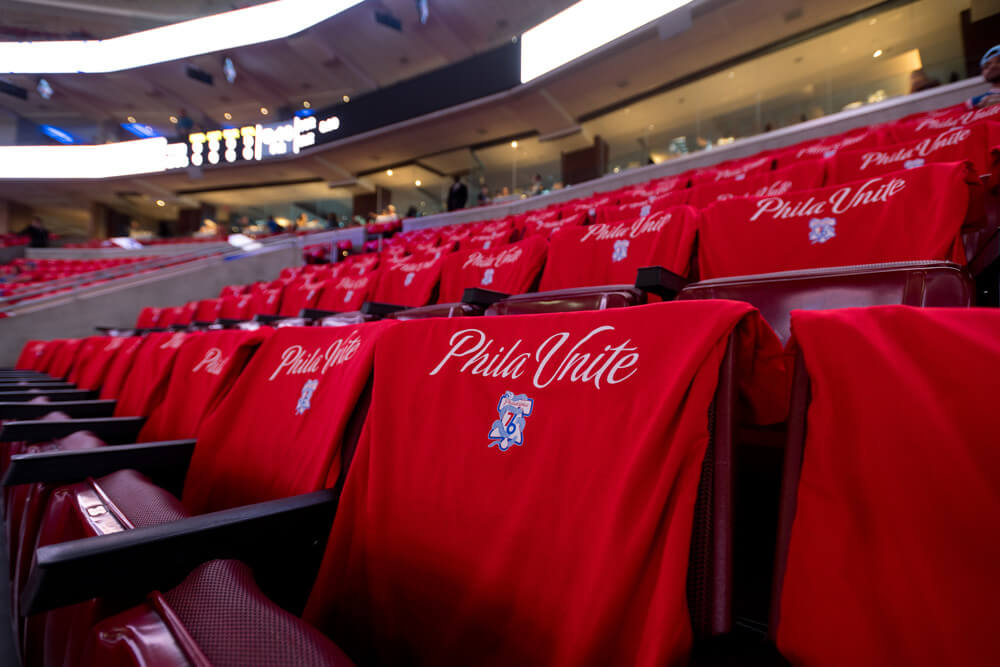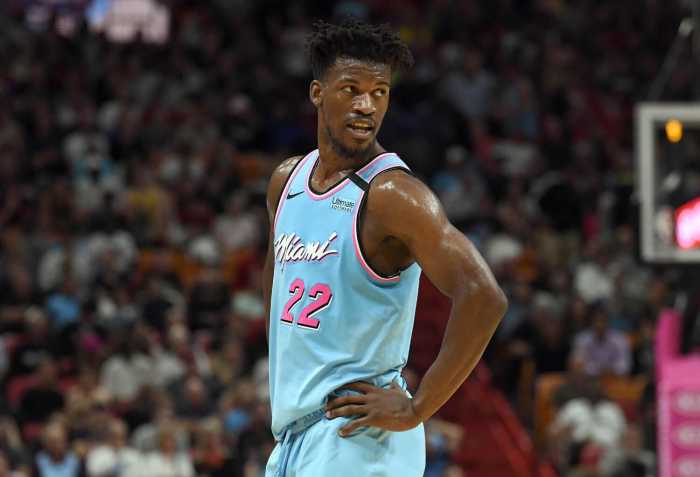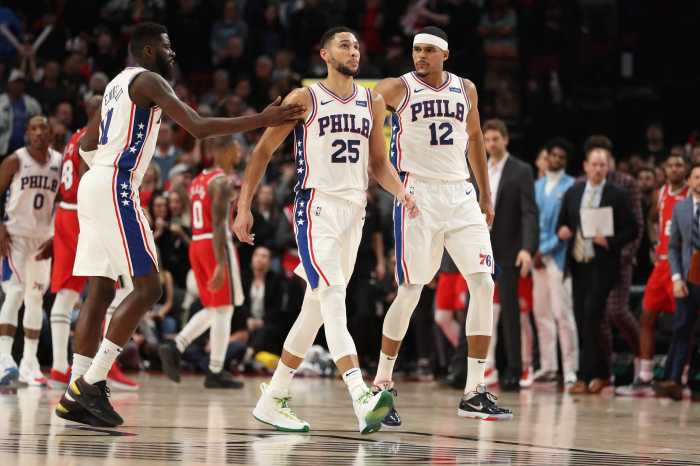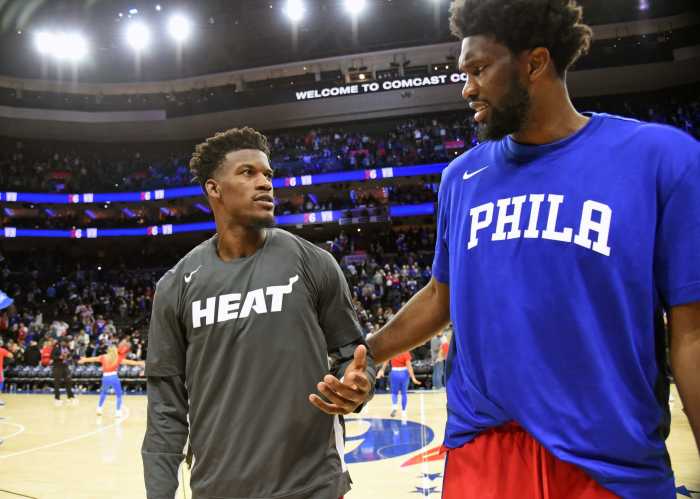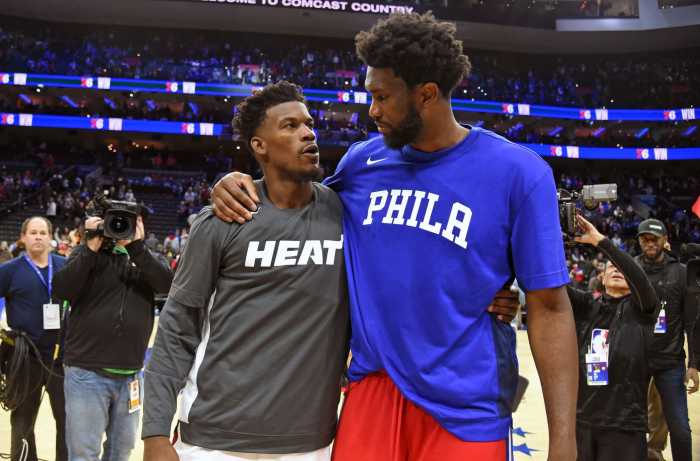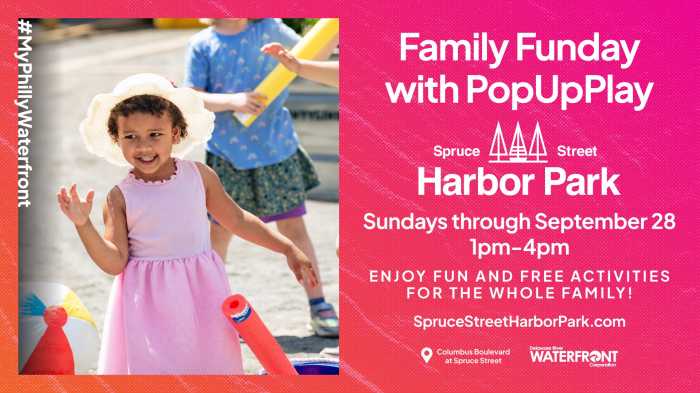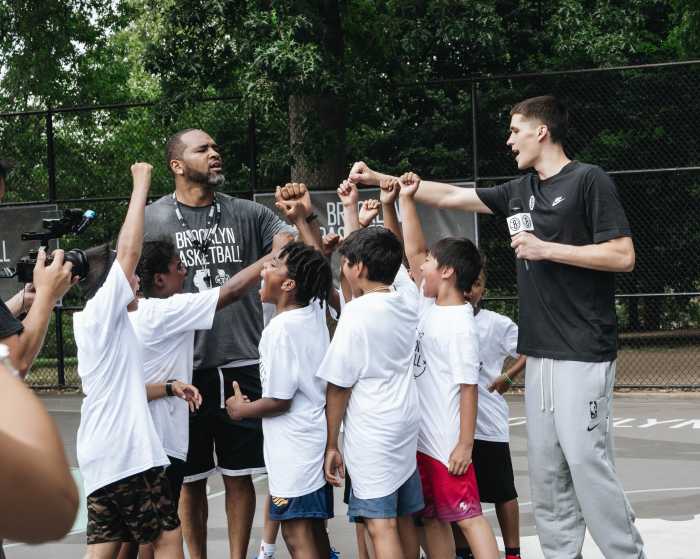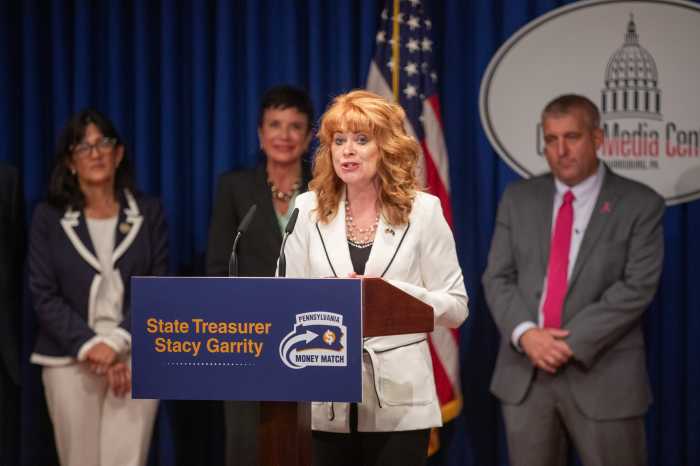The Philadelphia 76ers and the Brooklyn Nets are two teams who on the surface seem like opposites yet they’re much more alike than they look.
The following has been written by long time Brooklyn Nets fan and NBA junkie Ty Clark:
It’s rare that a generational talent becomes available for trade in the NBA. Earlier this season though, that is exactly what happened in Houston. Any team in their right mind would have been interested, though two rose above the others.
Of course it would be the Brooklyn Nets and the Philadelphia 76ers vying to acquire James Harden. An elite talent, an offense by himself, a walking MVP candidate suddenly available for trade, and the Brooklyn Nets and the Philadelphia 76ers would be the two teams trying to acquire him.
It made sense for both teams: the Nets have a two-year window to get a title with their “superfriends” approach, and the Sixers need a half-court creator. It made sense for two teams famous for their percentage-based approach to basketball to be interested in the hero of analytic basketball. But it made the most sense for the two “Process” teams in recent NBA history to be interested in acquiring the piece that would complete their transformation and transform them into elite title contenders.
The Nets, surprisingly, won. Four unprotected first-round picks and three
pick swaps are a treasure trove to give up, but an elite young talent under
contract for five seasons is a hard asset to pass up. But Tillman Fertitta’s
pettiness won out, and James Harden is now a Net.
But more surprisingly, Nets fans were not happy. On NetsDaily, the flagship
Nets fan site since forever, negative comments outweighed positive ones
significantly. Fans were disgusted, not angry. The picks weren’t an issue.
Trading away homegrown talents Caris LeVert and Jarrett Allen for a superstar who has been seen as selfish on the basketball court and now inside a team was anathema to Nets fans who had loved the scrappy “culture” of the Nets over the past four years.
It was hard not to view it as a betrayal. It was, of course, also an opportunity for the team to get one of the five best players in the game of basketball, but that did not matter. Many Nets fans would’ve preferred the Sixers acquire Harden.
The End Of The “Culture” Era
Trading LeVert and Allen for Harden marked the end of the Nets rebuild
aka “culture” era. “Culture” is what you sell if you have literally nothing else to sell, which is what the Nets had in 2016.
The infamous trade with Boston followed by player downturns, owner penny-pinching (understandable to not pay a $120M luxury tax bill for a 45-win team, but it was an unforeseen change), front-office dysfunction, and exit of all talent left the Nets in the worst possible non-expansion situation in NBA history.
Enter Sean Marks—barely. The Nets, being the Nets, nearly hired Bryan Colangelo as GM before being convinced to pay up for Marks. Immediately after Marks’ hire, changes were evident.
The Nets worked every angle they had, whether it was improving relationships with agents, scouting G-League and fringe players for hidden talent, hiring a player development coach, crafting the most diabolically creative offer sheets ever seen, and making an organization that was friendly to players and their families.
Marks mentioned “culture” so often that fans quickly developed a drinking game. But this was still the Nets, the bumbling little brother franchise in the eyes of national media. They had nothing. They were nothing.
To their fans, though, they were adored. The Nets played hard and smart
every night, making their games excellent comfort food. Their bench mob
celebrations garnered national attention. Castoffs like Spencer Dinwiddie
and Joe Harris became strong NBA players, homegrown talents LeVert and
Allen blossomed, and D’Angelo Russell went supernova long enough to
sneak onto an all-star team.
The Nets clawed their way to 42 wins and a playoff spot, momentarily terrifying Philadelphia 76ers fans with a game 1 win in a playoff series. The fun, crazy bunch was a joy to root for.
The New Look Nets
Then, on June 30, 2019, Kevin Durant and Kyrie Irving signed with the Brooklyn Nets. One of the greatest NBA players of recent memory chose to sign with the Nets. To many NBA writers, it was unconscionable.
“Why not the Knicks??? If you’re going to New York, why not go to THE GARDEN???”
Nets fans, though, were elated but not surprised. Durant and Irving signing
was viewed as a vindication of what had been called The Scola Principle, a
quote by Luis Scola in Zach Lowe’s “the Nets are curious” column of 2017:
“Once they win, they will get everything they want.” Durant and Irving
signing made sense in this light.
Of course, adding two superstars changes your culture overnight. Yes, said
Nets fans, but we’re adding them. The culture will still be here. Wrong.
Allen’s development was blocked when the Nets signed FOK (Friend of
Kevin) DeAndre Jordan to a four-year deal. The beautiful motion-based
offense that Kenny Atkinson’s Nets had run quickly morphed into Kyrie
Irving shooting his shots.
Atkinson was summarily fired, and interim coach Jacque Vaughn’s first move was to insert Jordan into the starting lineup—as clear a sign as ever about what was happening. The NBA is a business, and any business culture is set by its top employees.
If you change the top employees, the culture changes to them. Durant and Irving didn’t care about Allen and LeVert; they cared about winning a championship and didn’t see a path to it with Atkinson or with the Nets’ 2021 starting roster. Thus, exit Atkinson and homegrown talent, enter Steve Nash and James Harden.
The Nets now resemble nothing that they have been. There are a few
holdovers, but the team is markedly different. Perhaps one of the weirdest,
most emblematic examples of the change is the possibility of the Nets
signing Rondae Hollis-Jefferson a year after declining to sign him.
Hollis-Jefferson had been a fan favorite for his hustle, versatility, and energy during the culture era, but he was let go at the era’s end. Now, he might be brought back simply because he’s one of the best available players at a position the Nets are weak at, not because of any cultural benefit. Who cares about that stuff anymore? It’s a business.
A Tale Of Two Cities
The “Process” Sixers had no such moral dilemmas throughout their rise from the ashes. The Process was a business strategy to its core: roll the dice as many times as you can, try to hit home runs, discard the rest. It understood the challenges of the local market.
The Sixers would always be fourth or fifth in Philadelphians’ hearts without a title run, so an Atlanta Hawks-style “46 wins and a second-round exit” was never going to draw fans, revenue, and adoration. The Philadelphia 76ers started with vastly more draft capital than the Nets and turned it into an array of players and even more picks.
Liberty Ballers cataloged the Sixers’ players in the Hinkie era for a t-shirt in 2016; the total number of players on the list was 99. (Casper Ware, anyone?) Hinkie’s naked uber-pragmatism infuriated agents and the NBA, so it forced Hinkie out. As we all know, Hinkie’s plan worked incredibly well, leaving the Sixers with two homegrown stars.
It also left them with a really weird team. Perhaps it was due to the “see whatever sticks” approach or to the unique talents of their two stars or the mismanagement of the team after Hinkie’s departure. Whatever the case, the Philadelphia 76ers were weird for a while, which NBA writers loved.
It was poetic for the Philadelphia 76ers, who had walked an unconventional path, to end up with an unconventional team. It was as Hinkie would have wanted it, we said.
The People’s Process
For all their weirdness, though, the Philadelphia 76ers and their process make sense against the backdrop of Philly. The City of Brotherly Love, for all its wonderful things, is a second-tier city in the United States. It is not New York City and it never will be. It is the middle brother, the city that will lose its best to other areas but love its own forever.
Philadelphia sports teams are an extension of the city and how it understands itself in relation to others. The Philadelphia Eagles are the obvious example: tough, frisky, with an aggressive defense and a mercurial, just-below-elite QB.
The Eagles have had a hard time getting rid of an increasingly much-lower-than-elite QB partly because they drafted and developed him. He is theirs. And even now, some fans would welcome Nick Foles back—a decidedly average QB who is effectively one of Philly’s own for his multiple stints here and Super Bowl excellence.
The basketball scene in Philly has this more at the local level. Jay Wright
has turned Villanova into Philadelphia’s team partly by staying home and
spurning higher-profile programs. Villanova transcended the Big 5 but still
stays part of it because you never forget your roots. The Big 5, in turn, was
built on the history of high school basketball throughout the Philly area,
especially at private high schools with long-time coaches.
A New York State Of Mind
New York, of course, cares little for this. It is an elite city. It does not care as
much about its own because it does not have to. It attracts elite talent, who
then convince themselves that their move to “The Greatest City In The
World” is justified.
New York sports teams care about winning championships. Sustained non-elite success is not an option. If you’re not new and not elite, the elites will go elsewhere for new diversions. New York teams may as well have a “Coffee is for champions” sign in their break rooms.
When Mikhail Prokhorov was introduced as Nets owner, he spoke of
turning Knicks fans into Nets fans. This is very, very slowly happening.
Knicks fans are the right fans for the established New York franchise. They
obsess over which stars the team will sign with its cap room each next
summer…because they’re the Knicks, obviously?
Nets fans still have the majoritarian suburb kids feel, forever trying to figure out if the Nets could acquire a superstar through a trade. (In the early 2000s, Nets fans floated so many trade proposals with Kris Humphries, Marshon Brooks, and a draft pick that the package became known by its acronym HBAP.)
Building Through The Draft
Sixers fans, on the other hand, lived through the process by learning everything they could about their own and checking up on their development. They knew the names of all the players on the Sixers roster…and the Blue Coats roster. They knew the pick swaps and protections, geeking out over what their homegrown GM was building before their eyes.
The genius of Sam Hinkie’s strategy was not just that it was the smartest
play in basketball terms but also that it was the only way the Sixers would
grow into the relevance needed to sustain a high-level pro basketball
operation in Philadelphia. The city needed to have a team formed and
grown before its very eyes in order to love it the way it loved other sports
teams.
Drafting elite-level talent was the path to that. The Nets didn’t have that option; they had to outwit, outsmart, outlast for every inch, turning those small wins into bigger ones until the biggest one of all. That one, of course, is the result of one person: Kyrie Irving.
The Jersey Boy
Kyrie Irving grew up in West Orange, New Jersey, twenty minutes west of
the Meadowlands Sports Complex where the Nets played. There is a now-
famous photo of a young Kyrie proudly holding up a 90s-era Nets hat, and
he promised that he would play in the NBA while watching a Nets game as
a fourth-grader.
Kyrie stayed local for high school, going to St. Patrick’s High School in nearby Elizabeth, NJ, before he went to Duke, became a #1 draft pick, won an NBA championship, and had a bizarre tenure in Boston.
Kyrie’s charity work (which he is remarkably quiet about) has often focused on his home area, including yearly donations of turkeys to families around
Thanksgiving, given out personally by him.
When footage surfaced of a hallway conversation between Kyrie and Kevin
Durant at the 2019 All-Star Game where Kyrie appeared to say “It’s time.
They’ve got two max slots. Let’s go,” Knicks fans took it as a clear sign that
Kyrie was coming to them. After all, if he was coming home, there was only
one choice right? There was, and it was the Nets.
Rumors were that Kevin Durant preferred the Knicks, but Kyrie lobbied for his hometown Nets. (Worth noting: Spencer Dinwiddie had lobbied Kyrie for this a summer earlier when they were classmates at a Harvard program for athletes, knowing that Kyrie and KD wanted to team up.)
The two stars signed with the Nets, leaving Knicks fans flummoxed. A star had spurned the bright lights of the city in order to return to his roots.
Kyrie isn’t Lebron, writing giant editorials about his decision and promoting the daylights out of his return home. His return was quieter but noticeable.
The Net’s Results
The Nets were an attractive destination, but Kyrie made the choice to go home, bringing his friends with him. But it was the friendship of Kyrie, KD, and DJ, formed during Team USA basketball, that brought the Nets to where they are. It was Durant’s friendship with James Harden that forced LeVert and Allen out and Harden in.
The Nets are where they are because its power brokers are friends and
call the shots. They’ve changed dramatically, both in design and in culture.
They have discarded the scrappy misfits to become a glittering global
power. Who cares about homegrown talent and draft picks when you can have the best players in the world? Who cares about loyalty when your goal is winning?
James Harden was the culmination of the Nets’ process in many
ways and this is the most significant. The Nets may win a championship,
but it will mean more to the four friends who have made the Nets their own
than it will to the fans who rooted for this team when all there was was
“culture.”
The Sixers’ Process Realized
The Sixers, though? The final phase of their process was 2019, when
the team acquired Jimmy Butler and Tobias Harris, pushed all the chips in, and nearly knocked off the eventual-champions in a classic series. Joel Embiid cried after that game.
We all did too. It was the end of an era. The Philadelphia 76ers had become title contenders. They had arrived. The 2021 Sixers are a continuation of this, but the process is over. The honeymoon is done, the draft picks are gone, and the team is now able to attract elite talent […in the front office]. Most importantly, though, Ben and JoJo are still here (Alas, RoCo and TJ are not, but…you’re ours forever, fam.
The Philadelphia 76ers have kept their grown talent. Not acquiring Harden means they keep their stars; most likely any trade this season or beyond will not involve one of those two unless it’s a rebuild. Keeping them builds their fanbase and lets Philadelphians know the team is theirs.
Two Sides Of The Same Coin
The Brooklyn Nets and the Philadelphia 76ers are similar in some ways and drastically different in others. Taking two paths on the same journey, the constant on both sides is the support of their fanbase. The love of fans for their teams involves sticking with the teams, even when they make controversial decisions like trading their future for a Boston Celtics team past their prime or committing to losing for multiple seasons purposely.
In either case, the fans still proved they were loyal and while there are many more around during the times of plenty, they were not absent in the times of want. Both Philadelphia 76er and Brooklyn Nets fans alike understand that it is their job to support the team, perhaps even by calling them out on their mistakes.
When they ask why we care about them, there’s not really a great explanation. Maybe it was a moment, maybe a choice. This far down the road, it doesn’t matter. It is, and that can be enough. No matter how chaotic the world is, no matter how attractive the bigger city may be, we all know that a love of something is what motivates us. We wish our favorite athletes shared our loves, and it’s wonderful when they do. And for those who are only here for a time…we hope we can convert you. We have a process to do that.

